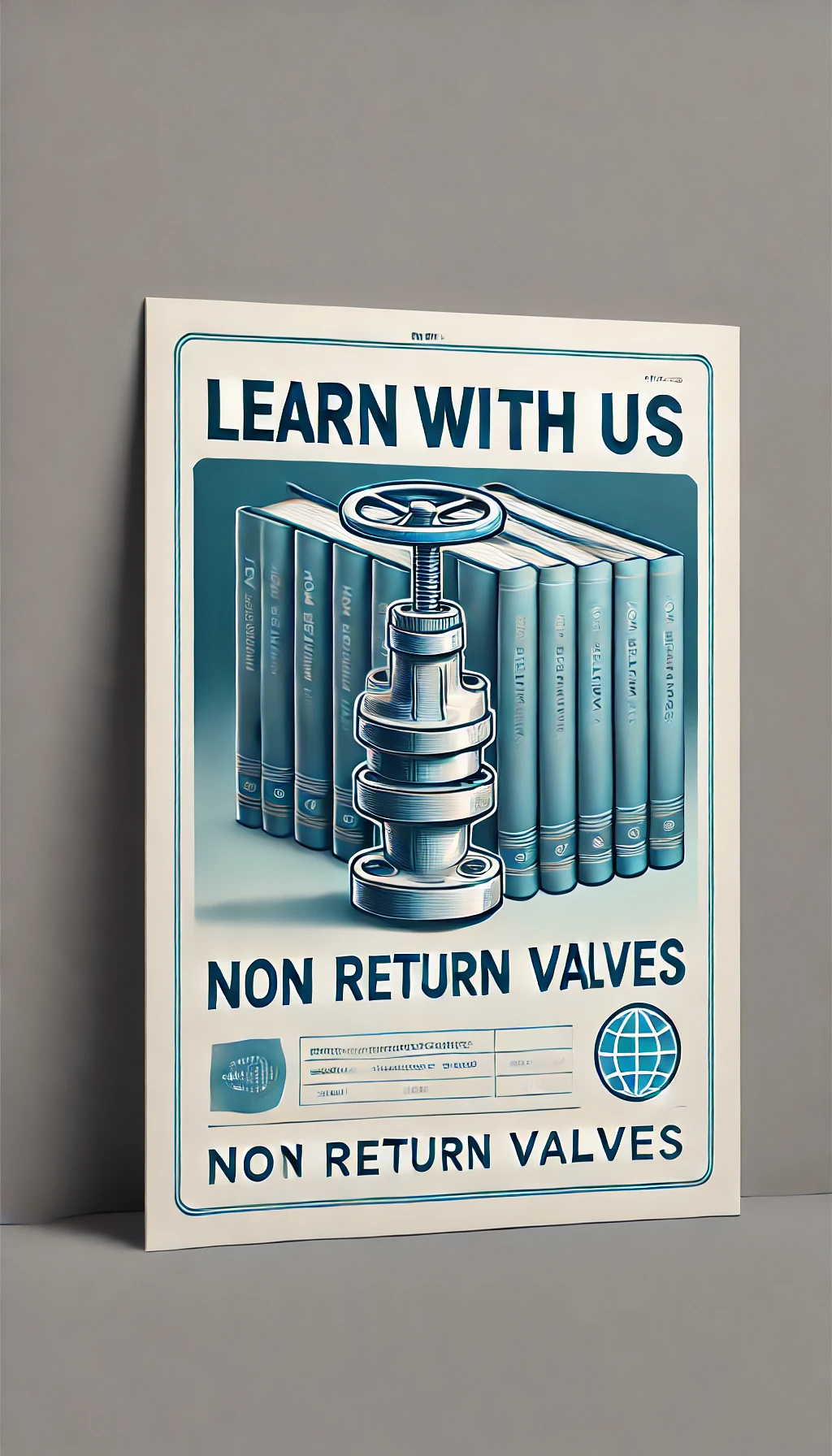Non-Return Valves
Non-return valves are designed to ensure fluid flows in only one direction. These valves are categorized into two primary types based on their mechanism:
- Lift Check Valves
- Swing Check Valves
The choice of valve type depends on factors such as service conditions, valve size, and material. Typically, lift check valves are used for smaller sizes (up to 40 mm nominal bore), while swing check valves are preferred for larger sizes due to design constraints.
1. Lift Check Valves
Lift check valves function via the lifting motion of a disk or element. There are three main types:
A. Piston Lift Check Valves
- Features a body similar to a globe valve.
- The piston is cylindrical, with a seating disk at its lower end.
- When fully open, the area between the disk and the seat equals the flow area through the seat.
- Renewable seat rings are commonly used, and for carbon steel valves, seats may be hard-faced directly onto the body.
- Suitable only for horizontal pipelines unless a spring-loaded piston is used, which allows installation in any orientation.
B. Ball Lift Check Valves
- Fluid flow is controlled by the movement of a ball.
- Designed for both horizontal and vertical installations (vertical installations require upward fluid flow).
- The ball is guided throughout its travel for smooth operation.
C. Non-Slam Check Valves
- A spring-loaded lift check valve designed to prevent backflow without causing water hammer.
- The disk is held in position by a spring located inside a housing cap or yoke.
Main Components of Lift Check Valves:
- Body
- Ball or Piston
- Cover
- Seat
- Guide
- Gasket
- Cover Stud & Nut
The body is forged or cast with socket-weld, screwed, or flanged ends. The cover may be bolted, welded, or fastened with union nuts. Seats can be integral or renewable, and renewable seats are typically screwed in.
2. Swing Check Valves
Swing check valves operate through the swinging motion of a disk. There are two types:
A. Conventional Swing Check Valves
- A hinged disk serves as the check mechanism.
- Fluid pressure lifts the disk to allow flow; when flow reverses, the disk returns to the seat by its own weight.
- Can be mounted in horizontal or vertical positions (vertical installations require upward fluid flow).
Main Components of Conventional Swing Check Valves:
- Body
- Cover
- Hinge
- Hinge Bracket
- Gasket
- Cover Stud & Nut
- Bracket Stud & Nut
- Disk
- Seat Ring
- Hinge Pin
- Disk Pin
- Washer
The body is cast with a tapered wedge seat and fitted with renewable seat rings. End flanges follow standards like ANSI B16.5, while butt-weld ends comply with ANSI B16.25. Gaskets and bolts are selected to match the service conditions.
B. Wafer-Type Check Valves
- Compact, flangeless swing check valves governed by API 594 standards.
- Available in two designs:
- Single Plate Wafer Check Valve: Operates like a conventional swing check valve, with a circular plate and a spring to aid closure.
- Dual Plate Wafer Check Valve: Uses two spring-loaded semi-circular plates, reducing seat damage and pressure drops.
Key Features of Wafer Check Valves:
- Sizes range from 2" to 48" nominal bore.
- Constructed with high-quality body and plate materials.
- Seat surfaces may be integral, renewable, or metal deposited. Stellited or resilient materials are used for seat surfaces.
- Offers reduced pressure drops in larger sizes, minimizes water hammer, and is compact compared to conventional check valves.

